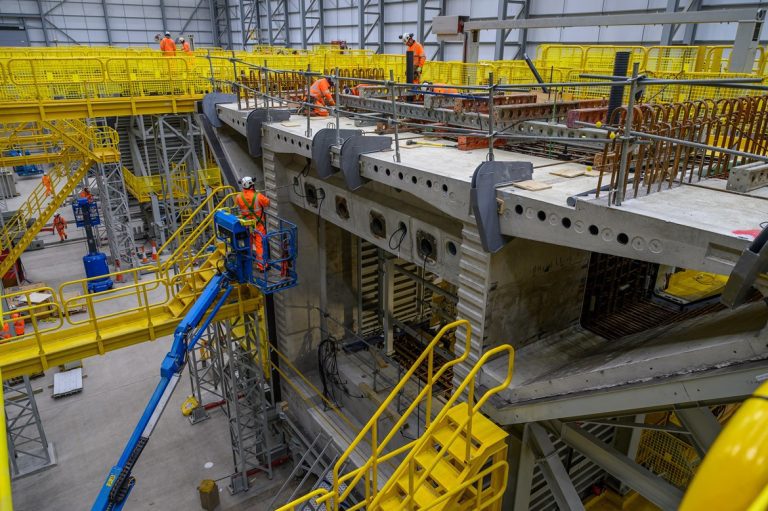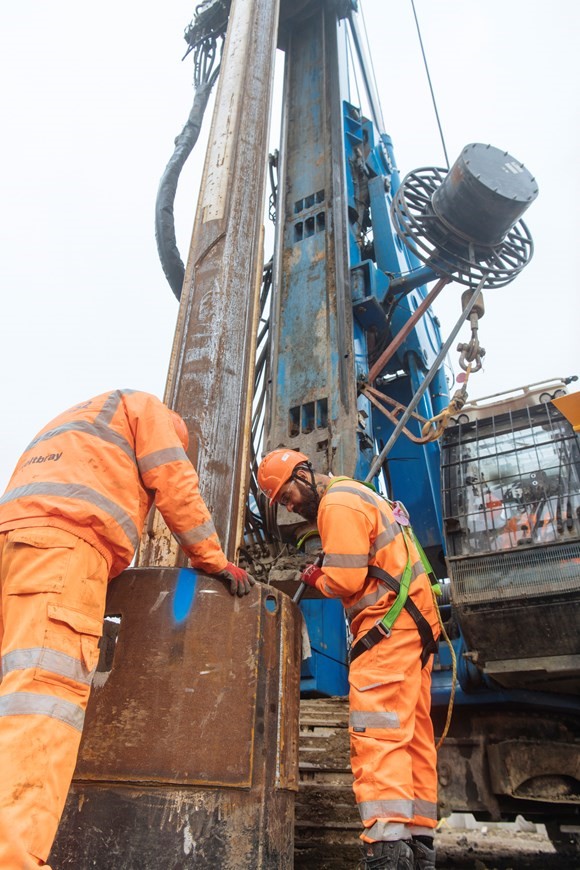Vehicular access to CGX Connect site is now complete Flagship Gloucestershire development has the potential to deliver new jobs Works supported by £1.885 million Growth Deal funding through GFirst LEP CGX Connect, the flagship commercial development at Gloucestershire Airport has reached a critical delivery milestone with access to the site now complete and future development unlocked. Karen Taylor, Managing Director, Gloucestershire Airport, has described this as a “significant” step toward delivering the final scheme which, when complete, will provide around 30,000 sqm of flexible floor space in a prime location for businesses operating in the logistics and industry sectors, while also potentially creating up to 1,500 employment opportunities. Montel Civil Engineering, instructed by Gloucestershire-based project manager Vitruvius Management Services as principal contractor, has delivered the work to date. This has included building a new entrance into the development, the diversion and protection of existing and new services, and the widening of access to the B4063 to allow a dedicated right turn for those coming from the west, alongside enabling works to clear the site, construct pedestrian refuges, and put in place new streetlights, signage and road markings. GFirst LEP provided £1.885 million in Growth Deal funding to support the infrastructure work needed to deliver CGX Connect. Karen Taylor, Managing Director, Gloucestershire Airport, commented: “These are exciting times for Gloucestershire Airport and CGX Connect. We’ve already seen strong interest in CGX Connect from businesses in Gloucestershire and the West Country, as well as those with national operations. “Now that there’s vehicular access to the site, we expect things to move quickly. Before now no one could access the site to build. This access road will unlock future development and brings us one step closer to realising a landmark development with the potential to unlock so much growth for the region.” David Owen, Chief Executive, GFirst LEP, said: “We’re proud to deliver Growth Deal funding for such an ambitious project in the county, delivering up to 1,500 quality jobs. It’s an exciting time for Gloucestershire as this project nears fruition.” Mark Price, Managing Director, Vitruvius Management Services, said: “Vitruvius would like to thank civils contractor Montel and our wider consultancy team for completing the construction of the park infrastructure works. Unlocking development at CGX Connect marks a significant milestone in delivering this project.” Simon Turbutt, Managing Director, Montel Civil Engineering, said: “This was an exciting opportunity to work with both Vitruvius and Gloucestershire Airport on the infrastructure for CGX Connect and a great example of how infrastructure improvements can be an enabler and catalyst for significant economic growth within the region.” Karen Taylor concludes: “These are transformational times for Gloucestershire Airport. CGX Connect, along with ongoing work to upgrade the airport’s runways, will elevate the quality and status of the airport as a ‘gateway for growth’ for the many significant developments being brought forward across the region.” Alongside CGX Connect, work to upgrade the airport’s runways is well underway and due to complete this summer. The airport’s crosswind runway (04-22) has already re-opened. Work is currently ongoing to resurface the main runway (09-27), install new lighting, upgrade signage and drainage, and install below ground infrastructure. For all commercial enquiries, contact Gloucestershire Airport by emailing communityrelations@gloucestershireairport.co.uk or calling 0800 062 2985. Montel Civil Engineering has a dedicated 24-hour helpline for any issues relating traffic management measures for CGX Connect: 07795 415752.














